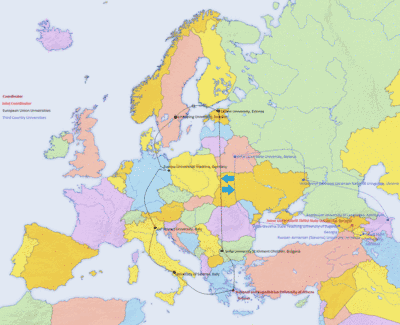Welcome to HERMES
an Erasmus Mundus project in the area of the Humanities: student and staff exchanges organized by a partnership of 15 universities in 11 countries, jointly coordinated by the National and Kapodistrian University of Athens and the State University of Tbilisi.
HERMES is one of 57 projects selected under Erasmus Mundus Action 2, Strand I in 2013.
The European Union Erasmus Mundus programme, managed by the European Commission's EACEA aims to enhance quality in higher education through scholarships and academic cooperation between Europe and the rest of the world.
Action 2 supports partnerships with third-country higher education institutions and pro-vides scholarships of mobility. As explained in its website, "Partnerships in the framework of Erasmus Mundus 2009-2013 are the basis for enhancing academic cooperation and exchanges of students and academics, contributing to the socio-economic development of non-EU countries targeted by EU external cooperation policy. Consortia must include a minimum of 5 higher education institutions from at least 3 European countries and a number of higher education institutions from targeted non European regions."
Action 2, Strand I promotes "partnerships and institutional co-operation exchanges between European higher education institutions and those in third countries, as well as a mobility scheme with scholarships for student and academic exchanges" at all levels of higher education. It was introduced through the incorporation of the objectives and provisions of the Erasmus Mundus External Cooperation Window (EMECW) 2007-2009.

HERMES is an acronym (Humanities Education Revitalized via Mundus ExperienceS), but it was not chosen randomly. Since the project is dedicated to the Humanities, it was appropriate for it to have a name deriving from Classical Mythology. The Greek god Hermes was particularly suited to the nature of the project: he is one of the most multifaceted and versatile of the Olympians. Among his many attributes the most relevant is that he often acts as messenger and mediator between gods and mortals. To do this he travels swiftly thanks to his winged hat and his winged sandals, fashioned by Hephaestus; he is thus the protector of travelers. He is quick-witted and inventive; soon after he was born, he invented the lyre, which he made out of a turtle’s shell. He has great charm, which usually earns him the other gods’ forgiveness for the tricks he likes to play on them. He is generally a god who crosses boundaries and forms connections between the people (or gods) on either side, exactly like the connections we hope to forge among the people in the fifteen universities and the eleven countries of our consortium.
The statue of Hermes holding the infant Dionysus by the 4th c. BC. sculptor Praxiteles is in the Archaeological Museum in Olympia. The photograph is displayed in the Wikipedia article on Praxiteles and was taken in 2006 by Roccuz.






